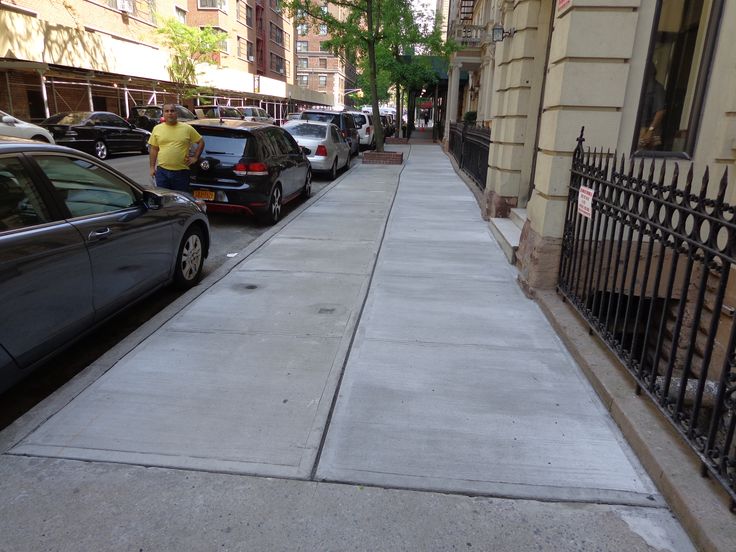Posted on April 17, 2020 by Rafael Cantillo
The optimal thickness for a general use concrete sidewalk is four inches.
The purpose of your sidewalk is the main determining factor of the thickness you need. Typical sidewalks provide a smooth solid surface for foot traffic and light-weight wheel traffic like bicycles and hand carts. When properly cured, a four-inch thick concrete sidewalk provides the sturdy surface needed for this traffic. If your sidewalk supports motorized vehicles or crosses a driveway, additional depth will be required. A sidewalk to support motorized vehicles may be up to 8 inches thick.
(Photo taken before the Safer-At-Home mandate.)
The thickness of your concrete sidewalk is one important element in the appearance and endurance of your sidewalk. Proper installation is essential for the professional appearance and long-lasting durability you need for any sidewalk. A properly installed sidewalk should meet your needs without the addition of extras that will increase the cost of your project.
Most sidewalks don't need to be reinforced with rebar.
Rebar is a steel bar used to reinforce the strength of concrete used to withstand heavy weight. The name comes from the term reinforcement bar and is typically used in thicker concrete sidewalks expected to support heavy trucks or machinery. Rebar might also be used in sidewalks required to withstand impact on a regular basis.
General use sidewalks don't benefit from the addition of rebar. In fact, using rebar in your sidewalk could actually cost you more over time if your sidewalk needs repairs. A typical sidewalk repair is completed by removing and replacing the damaged area. A reinforced sidewalk can complicate repairs.
Expansion joints are the occasional lines you see in a sidewalk that look like cracks. These joints aren't technically cracks because they don't extend through the entire thickness of the sidewalk, and they have an important purpose.
Concrete expands and contracts due to changing temperatures and moisture levels. These changes can cause your concrete sidewalk to crack, ruining its smooth appearance and increasing the potential for trips and falls. Joints in the sidewalk help prevent early sidewalk damage from random cracks. Sidewalk joints don't technically prevent cracks. They simply allow the concrete to crack where joints already exist.
There are two types of joints commonly placed in concrete sidewalks.
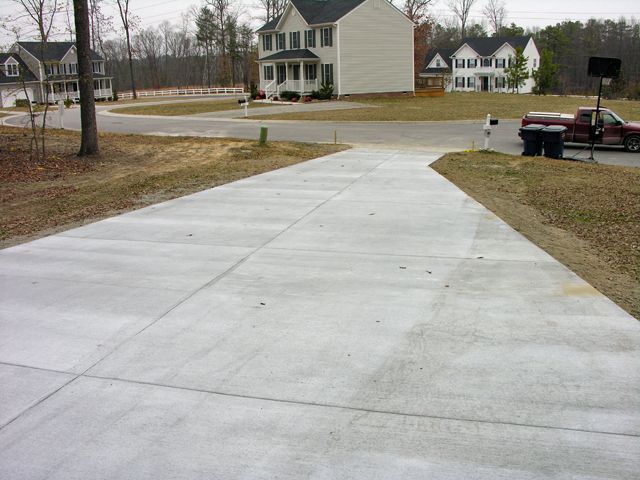 These joints are placed 8-12 feet apart in a four-inch-thick sidewalk and can be created during the pouring process or cut into the sidewalk once the slab has cured enough to prevent chipping.
These joints are placed 8-12 feet apart in a four-inch-thick sidewalk and can be created during the pouring process or cut into the sidewalk once the slab has cured enough to prevent chipping.Sealing your sidewalk helps prevent stains that build up over time and helps it resist wear from continual weather exposure. Your sidewalk should be sealed soon after it is poured and sealant should be reapplied every few years as needed.
Concrete technically continues to harden for years after pouring, but the initial cure takes around a month.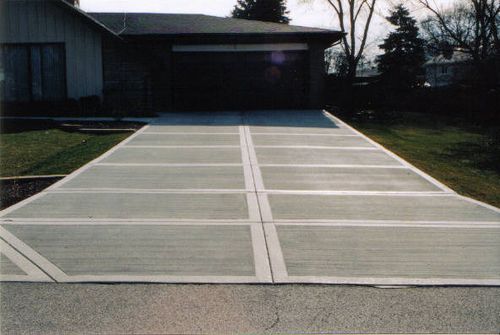 At this time, your sidewalk is ready to be sealed. Your paving company may test your concrete for moisture content before applying a sealer and wait for the optimal time to seal your sidewalk.
At this time, your sidewalk is ready to be sealed. Your paving company may test your concrete for moisture content before applying a sealer and wait for the optimal time to seal your sidewalk.
If you're having a sidewalk installed in a commercial setting, you want to know exactly what to expect. While every project is different, you can expect a professional paving contractor to provide a description of services so you can be prepared. Certain aspects of every concrete sidewalk installation are similar. Here's what you can expect.
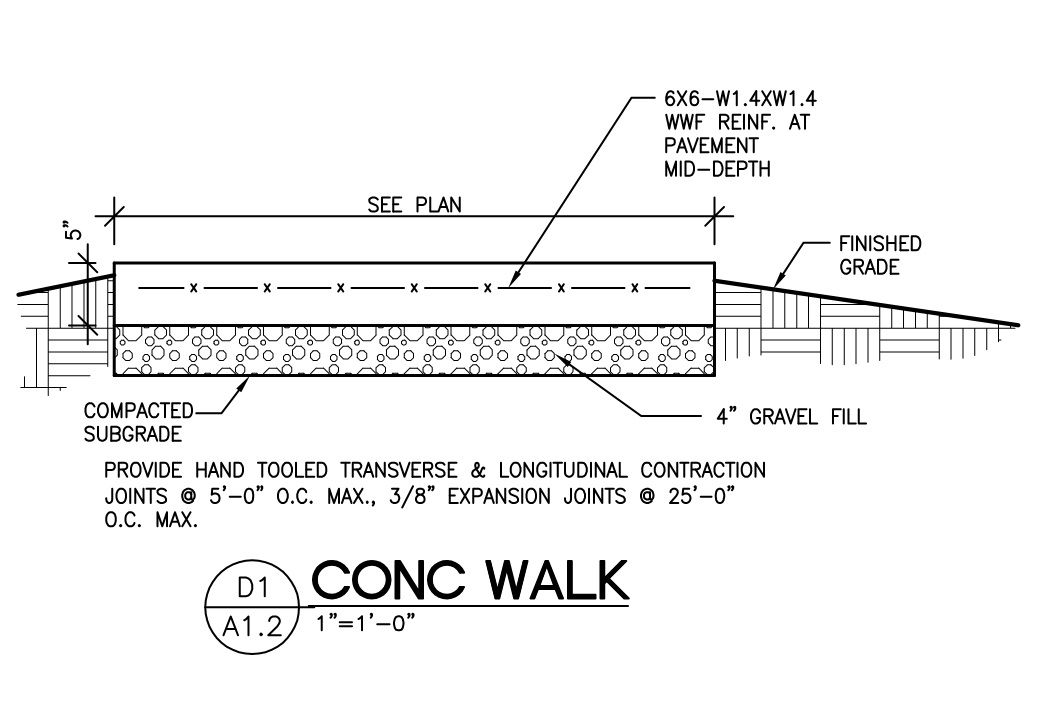 Other factors include the amount of prep work you need, special details like stamping, and whether you have an existing sidewalk to remove.
Other factors include the amount of prep work you need, special details like stamping, and whether you have an existing sidewalk to remove.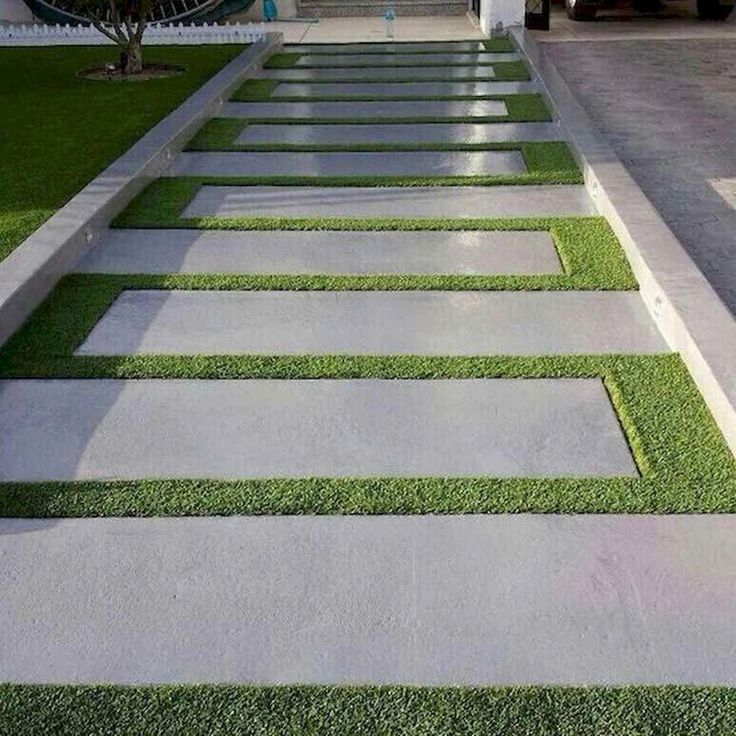
A concrete sidewalk is an investment that will last many years to come if it is properly installed. If your personal or commercial property needs a new sidewalk, Empire Parking Lot Services can provide you with beautiful, professional, results. Contact us at 714-633-0300 to have our experienced team assist you with your next concrete related project. Our team is passionate about customer satisfaction and determined to delight you with the best service, workmanship, and materials the industry has to offer. Please check out our "Anatomy of a Parking Lot" blog for a more in-depth view of what makes up a parking lot.
Other Concrete Related Blogs:
Who Is Responsible for the Sidewalk in Front of My Property?
If you own property that fronts the street, you may assume that the municipality or local government is responsible for maintaining the sidewalk. ...
...
Read More
Rafael Cantillo
10/01/2021
How Thick Should a Concrete Sidewalk Be Poured?
The optimal thickness for a general use concrete sidewalk is four inches. The purpose of your sidewalk is the main determining factor of the ...
Read More
Rafael Cantillo
04/17/2020
Sidewalks are an essential aspect of the municipal environment and should be universally open and safe. They should be able to handle everybody, users, including users with vision impairments and mobility. The utilization of sidewalks as an alternative to using the car, it should be recommended to promote a better lifestyle.
Concrete thickness is based on its use. In the area where you are laying the concrete, you will need to understand the soil or subgrade conditions. It also relies on the intent of the concrete that you set down.
A significant component of safe, open, aesthetically pleasing sidewalks is an urban infrastructure of the municipality.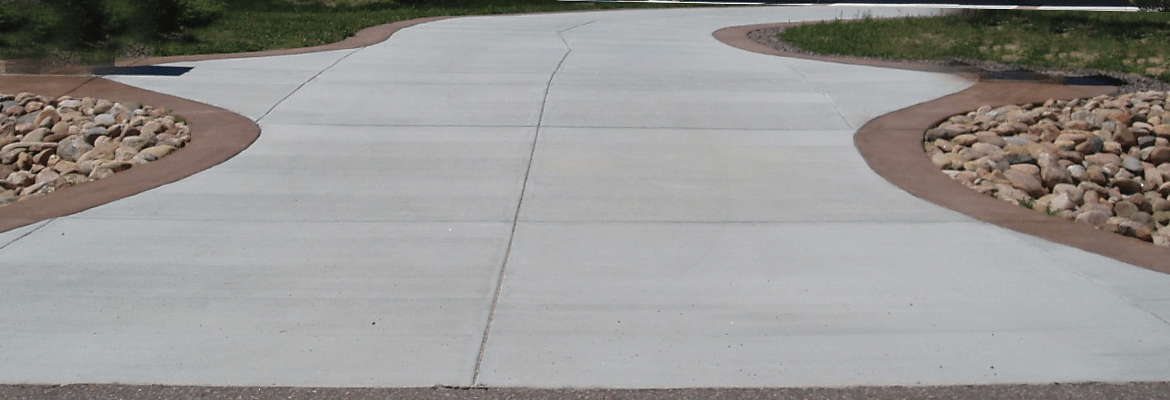
Users of the sidewalk must have secure, open walking areas outside the traffic zone. Deteriorate sidewalks can generate threats that impact public safety and transparency.
So, let’s get to discuss concrete thickness for sidewalks by selecting the perfect thickness.
Concrete Thickness for Sidewalks: Selecting the Perfect ThicknessTools required for selecting the perfect thickness of concrete sidewalksEvery construction work needs a tool. There are some tools which you can buy for doing this work. These products will try to ease your job. Like:
Any concrete contractor must have a full collection of instruments to get the job done because the correct tools will mean the difference between a good pour and a likely catastrophe.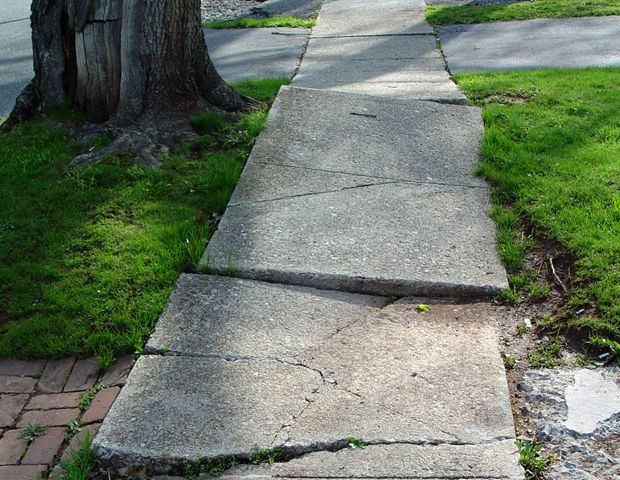 Most of the critical devices are standard and do not require a significant investment.
Most of the critical devices are standard and do not require a significant investment.
One major factor in the appearance and endurance of your sidewalk is the thickness of the concrete sidewalk. For the professional appearance and long-lasting strength you need for any sidewalk, proper installation is vital. Without the inclusion of extras that would raise your build’s expense, a well-built sidewalk can fulfil your needs.
For sidewalks or walkways in residential and industrial applications, architects usually use concrete.
Sealing Your SidewalksConcrete works very adequately if it is never sealed, but it can prolong its life and keep it looking good by adding a good quality sealer every few years. It’s a simple project for a DIYer to add a concrete sealer, and it will hold the concrete slabs looking nice and hopefully lasting longer.
Not only do sealed sidewalks avoid staining and wear, but they also stand up to weather, salt, and deicing items better than unsealed surfaces.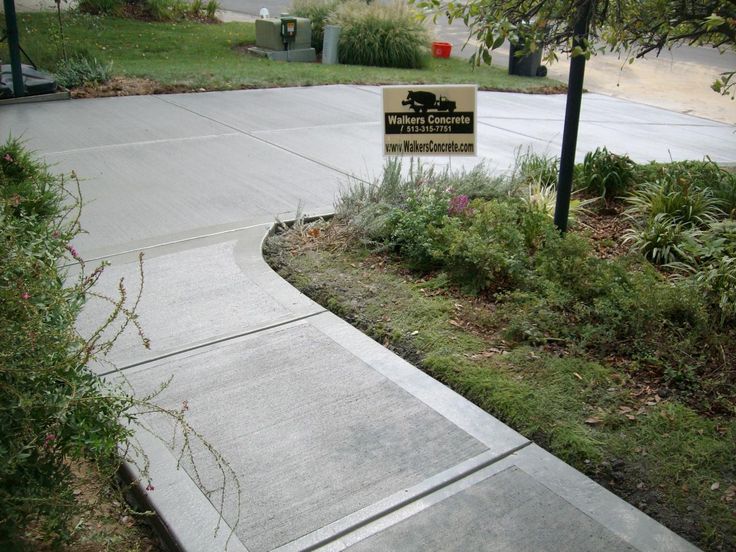 To maintain sidewalks in optimal condition around your property, automatically add a sealer substance after the concrete is poured, then reapply if appropriate every few years.
To maintain sidewalks in optimal condition around your property, automatically add a sealer substance after the concrete is poured, then reapply if appropriate every few years.
The concrete walkway is protected by a foundation or bed of gravel about 4 and 8 inches deep. Load the stone to create a solid bed for the concrete using a vibrating plate tamper. Never pour sidewalks over lawn or sod, or walkways. The substance of the organic plant decays and allows the foundation to settle, which can contribute to sidewalk cracks.
Getting DeeperTo withstand the weight of cars, walkways that cross driveways should be thicker. Thicknesses of around 7 1/2 to 8 inches are recommended, bringing extra strength to the places where the additional load is needed to be borne. In the field of the road, the walkway just has to be thicker. For instance, use 2-by-4-inch boards for forms to pour a 4-inch wide walkway along the street.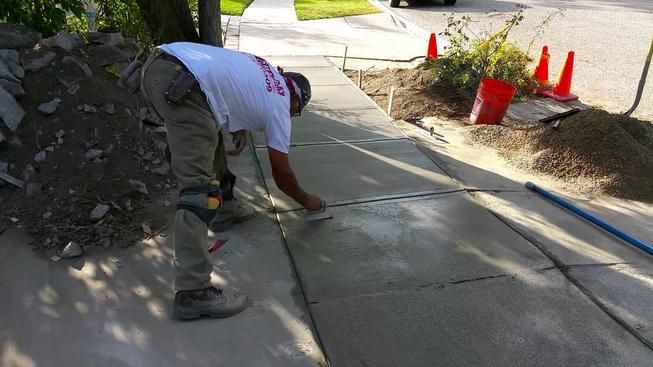
Most contractors pour a 4-inch thick slab for a pavement or walkway, creating a stable surface to accommodate foot traffic and light-wheeled vehicles such as motorcycles or hand carts. It is vital, robust, and water-resistant to properly cured concrete. A 4-inch thick walkway slab is created using 2-by-4-inch boards as shapes and leaving a 1/2-inch clearance under the boards. At this depth, one cubic yard of concrete occupies a walkway of around 80 square feet.
StrengtheningFor the concrete walkway, steel reinforcement rods or fiberglass fibers provide protection. As cracks form to help protect the walkway from causing height gaps that might cause pedestrians to slip or crash, the supporting material avoids shifting the walkway.
The fiber in concrete sidewalksInstead of plastic fiberglass drying shrinkage, fibers are commonly used in concrete to control cracking. They also decrease concrete permeability and therefore reduce water bleeding.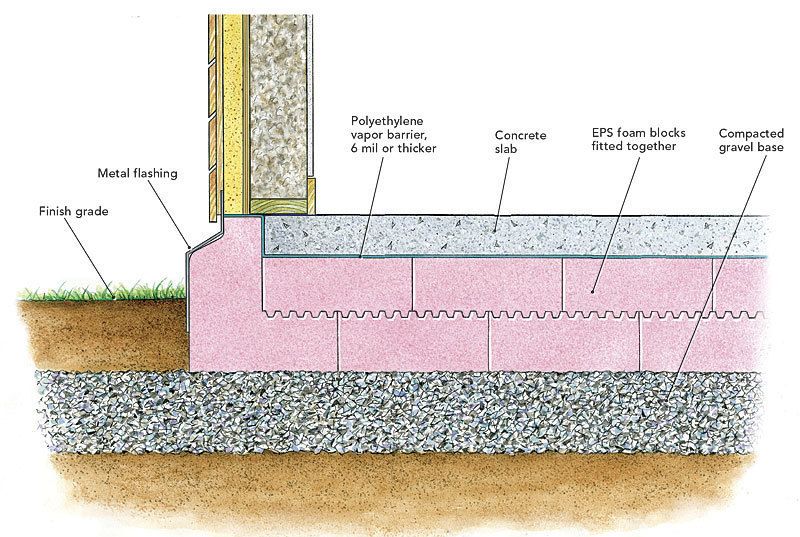 In concrete, certain kinds of threads provide more significant effects, abrasion, and shatter resistance.
In concrete, certain kinds of threads provide more significant effects, abrasion, and shatter resistance.
Fibrous fabrics such as synthetic fibers, glass fibers, natural fibers, and steel fibers are fiber mesh. Usually, it is used for sidewalks, patios, and driveways. The purpose of fiber mesh is to decrease the loss of water from the concrete and increase its structural integrity.
Fibers are specified in concrete in chosen applications in The City’s specification. Fibers are applied in the plastic form to the concrete mix and effectively reduce the cracking of plastic shrinkage.
Some Steps of WalkwaysEvery contractor has a horror tale of forms that have bulged under the weight of wet concrete. Create solid shapes to stop a horror tale of your own. Except for curves, use 1-1/2-in.-thick boards. If you are using 2x4s or 2x6s, position stakes apart by no more than 3 ft. Pack soil toward them if the shapes stretch below level.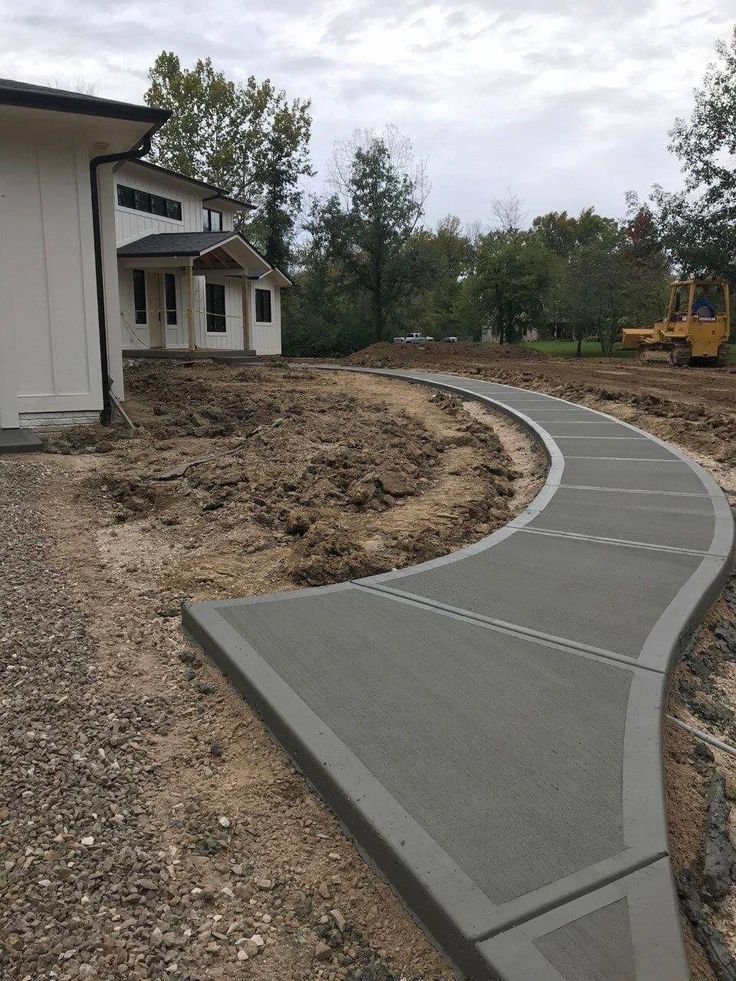
Hardboard siding is designed for external walls, but since it’s lightweight and inexpensive, it’s also an excellent material for curve formation—a Twelve-In. 16-ft x. At lumber yards, a plank costs about $10, and you can cut it to whatever width you like. Since it is so flexible, the hardboard requires external support to avoid bulging against the concrete’s force. Place stakes no more than 3 ft. apart if the forms are belowground and pack soil against them.
Stakes the project above forms build a barrier for the screed floor, even without hurdles, screening concrete is challenging enough. So take five minutes to break off any protruding stakes before you spill. Be sure that your screed board should not drag against the ground if your shapes’ tops are above ground level; you will need to skim off a little dirt to clear a path for the board.
The secret to crack-free concrete is a firm, well-drained foundation. Compacted soil accompanied by several inches of base material like gravel is usually the safest plan for a stable base. The most robust basis, though, relies on the environment and soil conditions. So speak to a local construction inspector who is acquainted with the neighbourhood’s standards. Loading the dirt with a leased plate compactor is always a smart idea, but if you have sandy soil, you might be able to miss the gravel instead.
On sidewalks or driveways, it typically does not matter. But above ground, the findings will look like Swiss cheese on steps, curbs, or walls. Only take a 2-4 and “plunge” all over the shapes to stop that. Then go all the way with a hammer down the conditions, tapping the edges.
If the pavement is too dry to flow down the chute, “No, thanks” should be the response.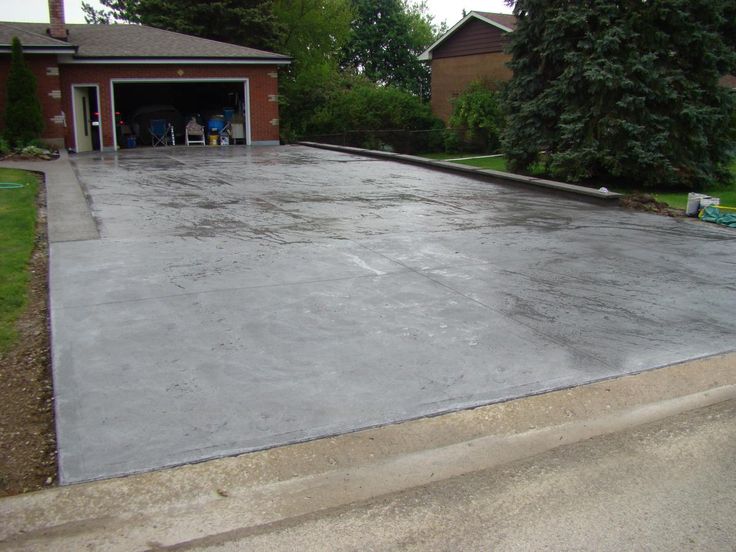 At the factory, the proper quantity of water is calculated correctly. Additional water weakens the mix. More water quickly makes it easier to deal with but can lead to a softer slab.
At the factory, the proper quantity of water is calculated correctly. Additional water weakens the mix. More water quickly makes it easier to deal with but can lead to a softer slab.
Since they control cracking, the grooves in concrete are called “control joints”. When it dries, the mortar shrinks, so cracks tend to appear elsewhere. Rather than an ugly spiderweb pattern, control joints establish straight splits. They also restrict later-forming damages. On a pavement, space joints are 5 ft. apart or less; not more than 10 ft. apart on a slab or driveway.
The more concrete remains wet, fibers or challenging and more potent it becomes, the more water is essential for the chemical reaction that helps concrete harden. Covering asphalt with 4-mil plastic sheeting is one way to slow down the drying process. Gently disperse the acrylic until the asphalt is rough enough that you can’t make an impact with your finger.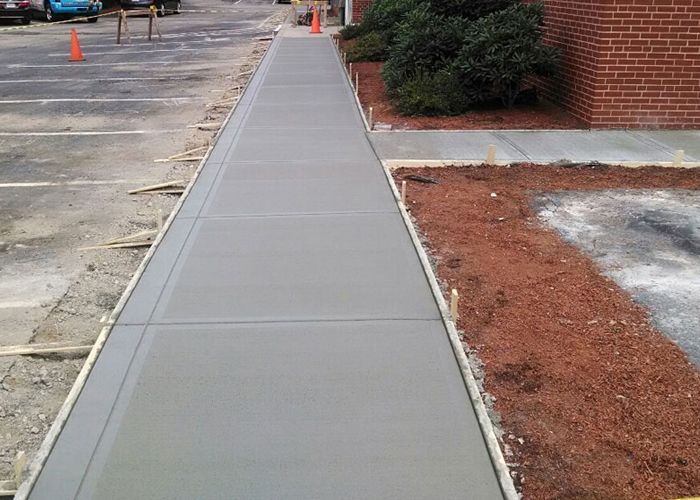 Stretch it out to remove wrinkles and lock in moisture by weighing the edges down. Lift the plastic and softly spray on more water as you see signs of drying. Three days to avoid the pavement or patio wet. For a driveway, seven days is ideal. On concrete, plastic can create mottled colouring, but in the splotches vanishes a month or two.
Stretch it out to remove wrinkles and lock in moisture by weighing the edges down. Lift the plastic and softly spray on more water as you see signs of drying. Three days to avoid the pavement or patio wet. For a driveway, seven days is ideal. On concrete, plastic can create mottled colouring, but in the splotches vanishes a month or two.
Attractive and practical sidewalks facilitate walking more safely. And minimize reliance on transportation through automobiles. Appropriate planning and construction promote accessibility and visually disabled residents’ use of sidewalks. It could be possible to use strollers and other wheeled family leisure vehicles. Posts from consumers are limited. Costs in the life cycle are minimized. Sidewalks have an extended operating life. The risk of users sustaining injuries is minimized.
Pouring Concrete walkwayOne of the most realistic ventures you can implement is pouring a concrete walkway as a homeowner’s master.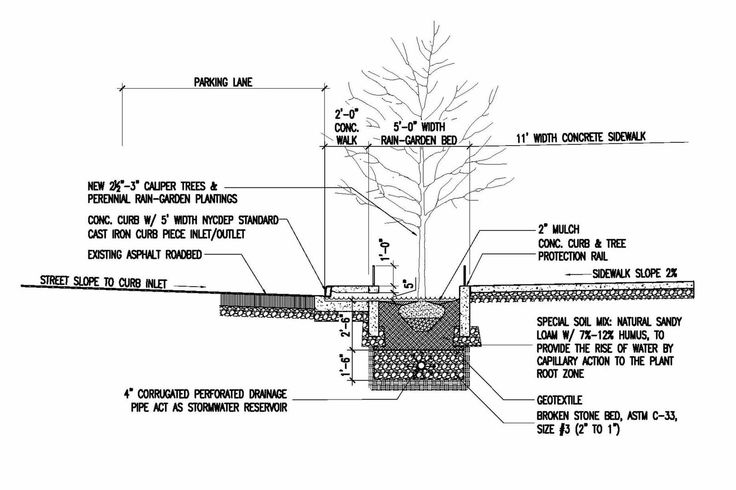 Once you have excavated and poured out a passage, you should take on broader concrete plans, such as patios and driveways, with confidence.
Once you have excavated and poured out a passage, you should take on broader concrete plans, such as patios and driveways, with confidence.
Poured sidewalls made of concrete are functional and highly durable. Snow or a freeze does not need footing, but you will need to cut sod and dig about the web. The excavation depth ranges from project to project, and it depends on the concrete thickness, plus the sand or sand thickness—subbase of compactible gravel. The subbase, the body itself give a more solid surface and the chance for water to drain off so that it does not directly provide pool beneath the walkway.
Some Important FAQsPlease go through this question and answer part. These will assist you in understanding the topic above.
For concrete, what is the minimum thickness?
Usually, concrete is applied at a thickness of 2 or more inches, so the darker it is, the harder the slab would be. Most generally, four inches is for a slab. The thinner uses will include, just to name a few, drives, walkways, slabs, and footers.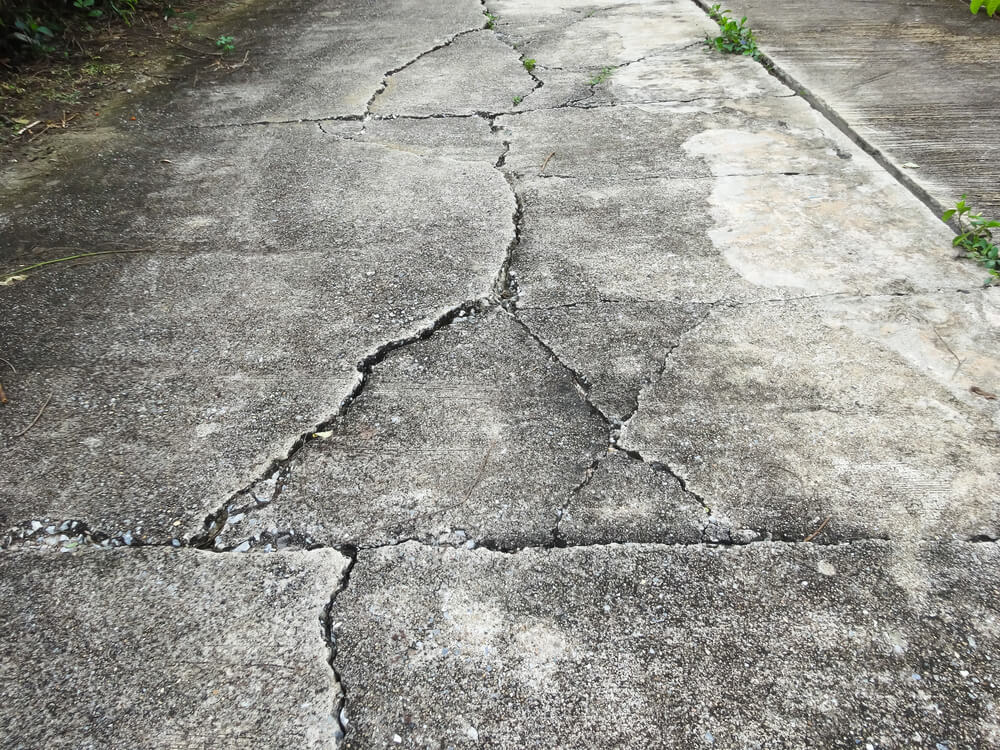
How dense is my concrete meant to be?
To have the right thickness place concrete to a 4-inch minimum thickness. According to the Tennessee Concrete Association, raising the thickness from 4 inches to 5 inches would add about 20 per cent to your concrete rate. Still, it will also increase the load-carrying capacity of your driveway by nearly 50 per cent.
For a 4 inch slab, do you need rebar?
No, with a 4-inch slab of concrete on grade, you do not require rebar. It does not require a 4-inch-thick slab cast on the ground and permanent contact with it to float and rebar. On concrete measuring 5-6 inches thick, Rebar is preferred.
Should you place plastic under a sheet of concrete?
Recently, however, research has shown that the old conventional 6-mil Visqueen layer under the slab is rarely successful for two key reasons: while it might appear water-tight, it requires a lot of water vapour to move through this grade of material.
What is the best base for concrete?
The base course material, according to ACI 302, “Concrete Floor and Slab Construction,” should be “compatible, easy to trim, granular fill that will remain stable and support construction traffic.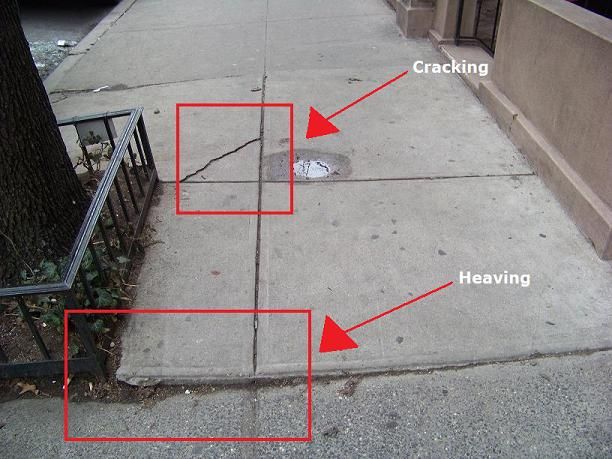 ” ACI 302 recommends material with 10 to 30% fines with no clay, silt, or organic materials.
” ACI 302 recommends material with 10 to 30% fines with no clay, silt, or organic materials.
What do you put down before concrete?
To shore up the subsurface, sprinkle a thin layer of cement sand onto the gravel and dampen it with water. Do not leave any standing water and allow the dampened sand to dry for about an hour before pouring the concrete. Ground preparation is key to pouring sidewalk, driveway, or any other concrete slab.
What happens if you pour concrete on dirt?
The clay can compress under the concrete’s weight, causing the slab to shift or sink over time. It can also leach moisture from the concrete itself, resulting in uneven curing and a brittle base. However, with proper preparation, it’s possible to pour a slab on clay soil without encountering these problems.
What is the cheapest way to make concrete?
You can get cheaper concrete by purchasing sub-grade concrete. This usually is available at salvage yards and is a clean material. Therefore, you don’t have to worry you’re not getting quality material. You’ll save a lot of money on concrete, and you’ll be doing your part for the environment by using reclaimed materials.
Therefore, you don’t have to worry you’re not getting quality material. You’ll save a lot of money on concrete, and you’ll be doing your part for the environment by using reclaimed materials.
The structure’s nature predetermines a sidewalk’s ability to withstand deformation, and this can not be changed by preventive maintenance. Municipalities need to defend the public by recognizing the situation—sidewalks by way of routine inspections.
For sidewalks that are vulnerable to increased foot traffic or a significant number of inspection periods of one or two years could be warranted for senior citizens. Recording quality scores can help ensure that the right decisions on maintenance and replacement are taken.
So we can say that Sidewalks can provide pedestrians isolated from a secure, relaxed area the direction of traffic there. When sidewalks are installed within the public right-of-way, the municipality retains responsibility for all possible maintenance, restoration, and reconstruction during the asset, repair, and service life.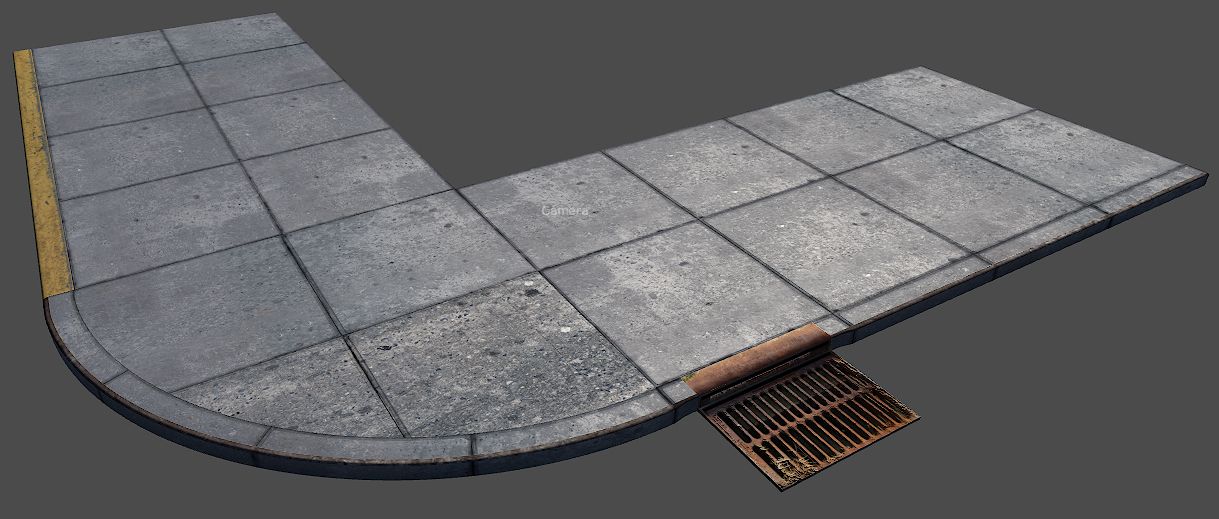
Walkways are a popular concrete project for residential and commercial properties. Unlike parking lots and driveways, footpaths and sidewalks are usually designed for pedestrian traffic. Find out how thick sidewalks are, when to consider reinforcement options, and how G&G Concrete & Construction can help you create a reliable concrete walkway.
In most situations, we pour 4" concrete pavement. This thickness is more affordable than a thicker board and provides sufficient strength for normal use. As long as only pedestrians, carts and bicycles walk on the path, you will enjoy a durable surface.
Content of the article:
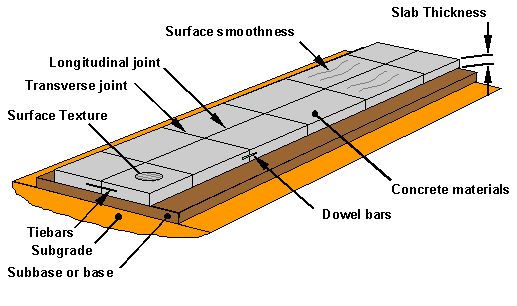 1 Durability
1 Durability Concrete thickness is an important factor, but not the only one. You need a skilled laying team and a high quality mix to keep your paving smooth, safe and value for money. Improper laying may result in an unsafe surface. Do-it-yourself paving is incredibly time-consuming and difficult to accomplish with commercial tools and experience. Once you have selected a reliable team that recommends a quality product, discuss these two benefits of a thick, reliable track.
Tracks crack and chip for a variety of reasons, but one common is thin slab. Together with our team at G&G Concrete & Construction, ensure that the entire track is at least 4 inches thick. This thick slab withstands both home and commercial foot traffic and is designed to last for years with minimal maintenance.
A thick, professionally installed concrete walkway is an attractive landscape design feature. Create a walkway to your backyard garden or pool for an elegant and safe path. In commercial spaces, a thick, smooth-surfaced concrete pavement is easy to maintain and facilitates traffic flow.
Professional installation for a beautiful finish. Your laying team doesn't just pour the slab and that's it. Instead, the process requires careful planning, foundation preparation, pouring, and leveling. A smooth surface is one of the hardest things to achieve when you're working with an inexperienced team.
Sealants and other reinforcement methods can be used to extend the life of your walkway or increase its weight rating. Discuss these services with your team to learn more about the best ways to protect your sidewalk from heavy traffic and weather.
Steel bars are used in commercial construction projects to reinforce concrete elements.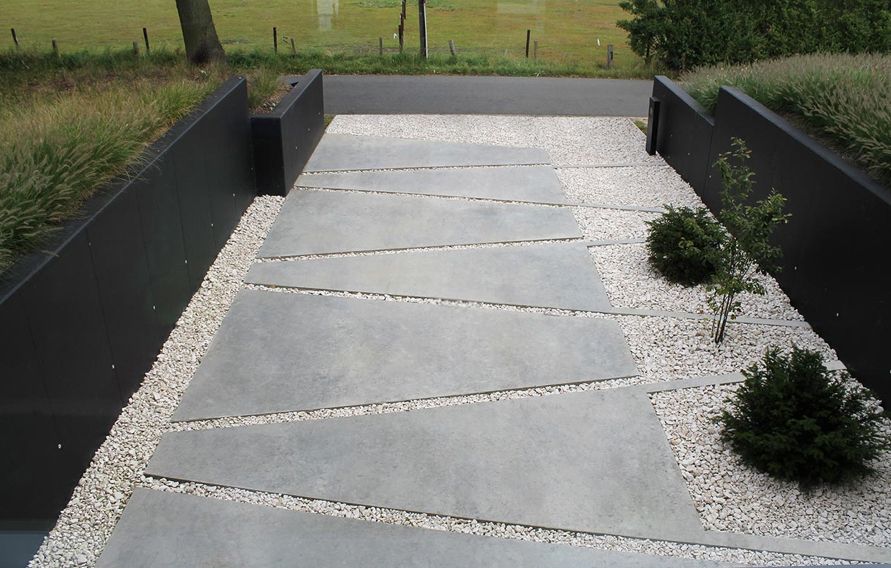 Concrete is poured around the rebar frame to increase the weight bearing. This is a common addition in places where heavy equipment is expected to operate, but is rarely used in the construction of footpaths.
Concrete is poured around the rebar frame to increase the weight bearing. This is a common addition in places where heavy equipment is expected to operate, but is rarely used in the construction of footpaths.
The addition of such fittings not only costs more, but also increases the cost of maintenance and repairs in the future. Discuss reinforcement options with your team if you plan to drive vehicles on the pavement frequently but otherwise do not intend to use it. Typically, pavements used in severe conditions are poured up to 8 inches thick, but are rarely reinforced with rebar.
Winters in and around Macomb, Michigan can be harsh. Low temperatures and the annual freeze/thaw cycle can increase the risk of cracking your track. To prevent early cracking, some lanes use expansion and control joints. These lines allow the concrete to expand with less risk of cracking. Ask if this service applies to your walkway or sidewalk project.
Another common strengthening technique is the application of a sealing layer.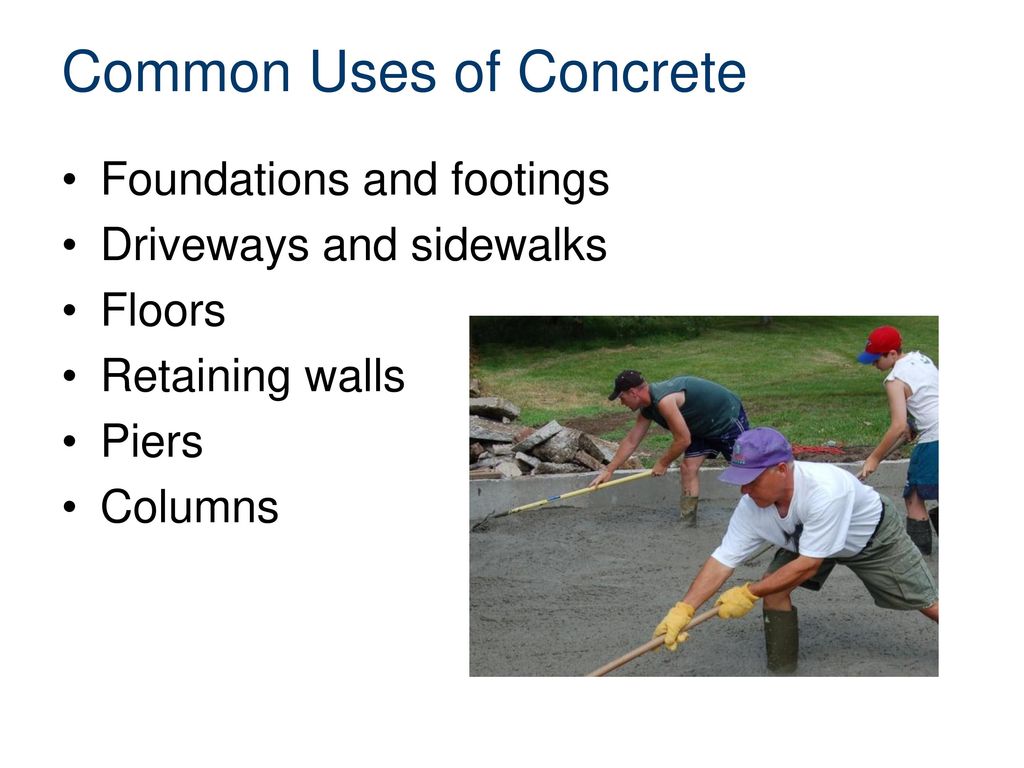 Direct sunlight, heavy rain and snowfall can all affect the surface of your walkway. Reduce the risk of potholes, cracks, and other problems by inquiring about sealing as the last step in a concrete walkway construction project.
Direct sunlight, heavy rain and snowfall can all affect the surface of your walkway. Reduce the risk of potholes, cracks, and other problems by inquiring about sealing as the last step in a concrete walkway construction project.
The delegation of "Aerodorstroy" plans to visit the VIII annual forum "Port Infrastructure: Construction, Modernization, Operation", held in Moscow on March 21-22. The forum is organized with the support of the Ministry of Transport of the Russian Federation
details
Depending on the location on the pavement, expansion joints are divided into joints in the transverse and longitudinal directions. Transverse seams provide the possibility of deformation of the coating in the longitudinal direction, longitudinal seams - in the transverse direction
more
For the 10th time Moscow will host the International Exhibition and Forum of Civil Aviation Infrastructure NAIS. I would especially like to note that this year the anniversary event coincides with the celebration of the centenary of Russian civil aviation. NAIS 2023 as well as
I would especially like to note that this year the anniversary event coincides with the celebration of the centenary of Russian civil aviation. NAIS 2023 as well as
more
Representatives of the company "Aerodorstroy" once again plan to take part in the IX International Scientific and Practical Conference "Innovative Technologies: Ways to Increase the Overhaul Life of Highways", organized by Moscow
details
Happy New Year 2023! Having gone through periods of crises, pandemics, restrictions, after centuries of growth in development, scientific and technological discoveries, you will always have decent partnerships and pleasant memories of doing the right thing by your side
more
In early February, representatives of our company visited an ancient city in Russia - Irkutsk, located in the east of Siberia, in the picturesque valley of the Angara River.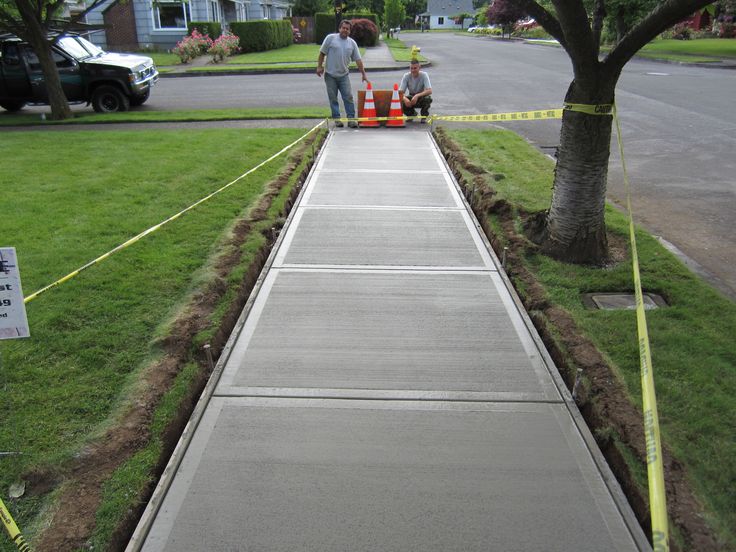 The purpose of the trip of our specialists was to visit the 3rd International Practical
The purpose of the trip of our specialists was to visit the 3rd International Practical
details
-th National Exhibition and Forum of Civil Aviation Infrastructure NAIS 2022. This aviation forum is a recognized industry event in the Russian Federation
more
Today our company is 25 years old! We thank all our partners and employees for being with us all these years. Experience and traditions accumulated over many years, a team of professionals, innovation, innovation - all this allows us to successfully
details
AERODORSTROY took part in the 12th International Conference on Concrete Pavements. This conference continued the tradition of a series of international conferences started in 1977
more
The service life of artificial pavements of airfields and highways in the Russian Federation is lower than the service life of pavements at similar foreign facilities Three main factors share responsibility for such a low service life: errors about
details
AERODORSTROY took part in the I International Scientific and Practical Conference "Construction of high-quality and bladeless roads using cement concrete and mineral binders". Representatives of the Ministry of Transport of the Russian Federation took part,
Representatives of the Ministry of Transport of the Russian Federation took part,
more
From 24 to 27 May 2021 in Moscow, Crocus Expo hosted an exhibition of construction equipment and technologies in Russia bauma CTT RUSSIA. The delegation of AERODORSTROY LLC visited the exhibition. The event is the most important communication platform in Russia,
details
Partners LLC "AERODORSTROY"
Every year, Customers are becoming more demanding in terms of power, versatility, experience of construction contractors performing a range of works on the construction and repair of concrete pavements. In accordance with these requirements ...
more
Construction of a concrete road in the Krasnodar Territory
In 2020, AERODORSTROY Company laid several kilometers of a two-lane concrete road in the Krasnodar Territory.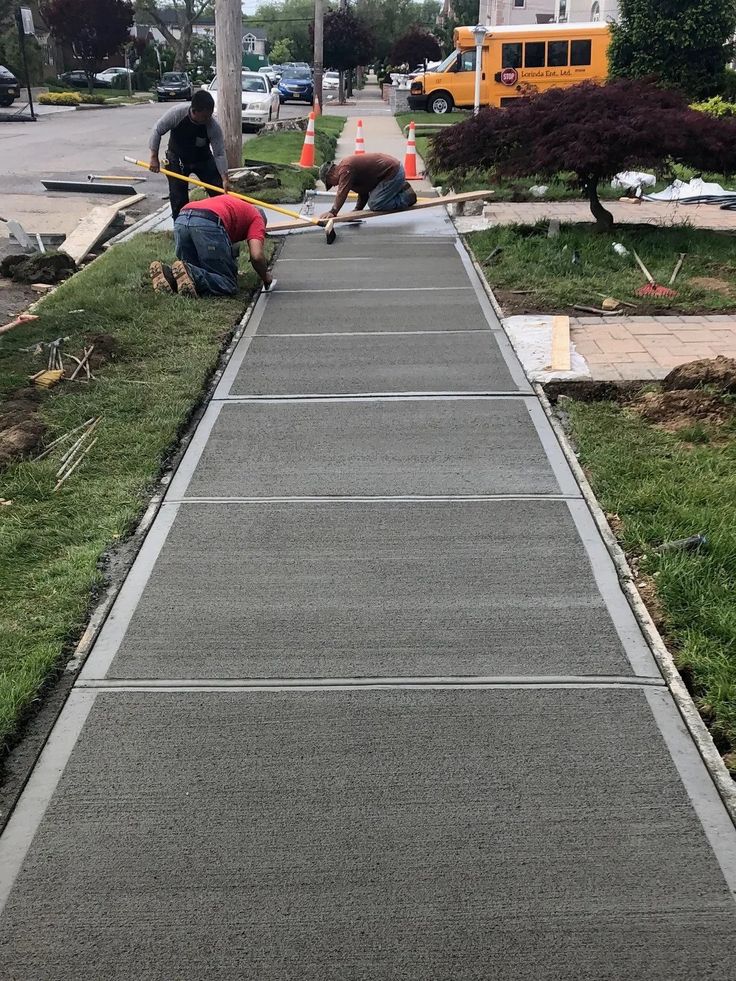 The section of the constructed two-lane motor road belongs to the III category of motor roads with a lane width of 3.5 m. Thus, ...
The section of the constructed two-lane motor road belongs to the III category of motor roads with a lane width of 3.5 m. Thus, ...
Repair of a container site in Podolsk
Container business today is an actively developing competitive market. In this regard, many companies strive to be "in the stream" of modern trends, study and evaluate the prospects, developing a new line of business for themselves. Container ...
more
Repairs at Pulkovo Airport St. Petersburg
In 2015 Aerodorstroy LLC carried out a set of repair and construction activities at Pulkovo International Airport in St. Petersburg. The specialists of our company carried out works on the construction of a section of a new ...
more
Repairs at Vnukovo Airport 1
In a short time it was necessary to replace 10 airfield plates at a functioning ...
more
Reconstruction at the Ulyanovsk airport
In 2016, Aerodorstroy LLC carried out work on the reconstruction of the Ulyanovsk (Barataevka) airport complex. At the facility, work was carried out to install a new cement-concrete pavement for taxiways and the apron. Task ...
At the facility, work was carried out to install a new cement-concrete pavement for taxiways and the apron. Task ...
more
Repair at Sheremetyevo airport terminal C
In 2019, AERODORSTROY LLC performed work on cutting a longitudinal through seam (SHP) and a seam adjoining the asphalt concrete pavement to the cement concrete pavement (ShA) at the site "Reconstruction of the platform of terminal C" Stage No. 1 ", and cutting work ...
more
Repair of coatings at Vnukovo Airport
In 2014, a wide range of work was performed on the territory of Vnukovo Airport: replacement of concrete slabs of about 1500 m.p., sealing of joints, repair of cracks and chips on the platform. The variety of types of work demanded from the team of "Aerodorstroy" high ...
more
Repair of the business aviation center at Sheremetyevo Airport
In 2020, the Aerodorstroy company carried out work to repair the coatings of the storage areas and the utility wells located on them on the territory of Sheremetyevo Airport, and in particular on the platform of business aviation and aviation .